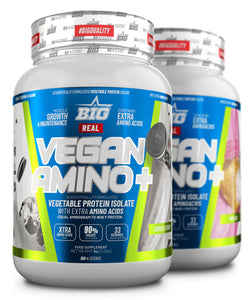
FROM THE SOYBEAN, TO THE STEM
Sergio Guerrero
INTRODUCTION
In this new Blog entry we will detail all the most relevant points when choosing a vegetable protein.
From the Development Department of BIG Science , Real Vegan Amino+ was created, “a 90% vegetable protein isolate enriched with an extra 10% of essential amino acids in the right proportion so that none of them are limiting, which makes it a supplement that offers virtually the same quality as a traditional protein of animal origin, such as proteins derived from milk. This vegetable protein is formulated for people who are lactose intolerant, vegan, or who, on the contrary, are omnivores and want to add a contribution of vegetable protein to their diet.

VEGETABLE PROTEINS
Protein is a nutrient that has been trending increasingly positively in the minds of consumers, with increasing demand for both plant-based and animal-based protein sources.
Plant-based foods can and often do contain all essential amino acids (EAAs), although some amino acids are found in extremely low concentrations, meaning we do not have adequate amounts to stimulate muscle protein synthesis (muscle building). Therefore, some amino acids are considered limiting in this regard, in which case the source would be incomplete if there were an insufficient amount of any EAA. In the real world, we rarely consume food in isolation, a varied and balanced diet should cover your bases and we will talk about this in more detail a little later.
The amount of nutrients the body can absorb and the amino acid profile are the limiting factors in stimulating muscle protein synthesis, in the context of protein . Although we may be eating a lot of protein, is it all digestible? Remember that what matters is not what you eat, but what you can absorb and, therefore, use for biological processes such as muscle development.
Two requirements for a protein to be considered high quality or complete for humans are to have adequate levels of essential amino acids (Fig. 1) to support human growth and development and to be easily digested and absorbed.

- Figure 1: Essential, dispensable and conditionally essential amino acids in the human diet
The Protein Digestibility Corrected Amino Acid Score (PDCAAS ) was developed in 1989 by a joint FAO/WHO expert consultation on protein quality assessment to compare amino acid content. essential amino acid requirements (mg/g protein) with a theoretical reference protein that is thought to meet the essential amino acid requirements (mg/g protein) for a given age group, creating a ratio known as the amino acid or chemical score. The indispensable amino acid with the lowest ratio is known as the most limiting amino acid . Later in 2011, FAO introduced an updated amino acid scoring system, the Digestible Essential Amino Acid Score (DIAAS).
The DIAAS is calculated and interpreted similarly to the PDCAAS, but with some important differences. First, the reference standards of essential amino acids were revised to reflect advances in scientific knowledge on amino acid requirements . Secondly, a single estimate of fecal protein digestibility is no longer used, but rather the concept of individual amino acid digestibility in the ileum was incorporated . True fecal digestibility of protein, which is based on excretion of nitrogen in the feces, is complicated by the considerable exchange of proteins, amino acids, and urea between systemic stores and the lower gastrointestinal tract. In response to this limitation, it was recommended to measure amino acid digestibility in the ileum, which reflects the concentration of amino acids reaching the ileum and would therefore enter the colon. derived from ileostomy performance studies performed in animals or humans. As such, each indispensable amino acid of a given protein source will have an associated ileal digestibility value and its amino acid score will be corrected for that value. Finally, unlike the PDCAAS, the DIAAS method allows for scores >1.00 to recognize that there may be incremental health benefits associated with these higher DIAAS scores .
In general, most animal protein sources, such as milk, whey, casein, eggs, and beef, have a PDCAAS equal to or very close to 1.
Plant proteins may have insufficient levels of one or more essential amino acids. Legumes are frequently low in the sulfur-containing amino acids methionine and cysteine, while lysine is typically limiting in grains. However, it should be noted that plant proteins differ in the amounts of limiting amino acids that are present. Figure 2 shows the digestibility of various sources of both animal and plant proteins.

- Figure 2: Protein quality of whey and selected plant protein sources
Regarding their bioavailability, plants contain trypsin inhibitors, phytates, tannins and other antinutrients that prevent part of the protein we ingest from being digested . Antinutrients can be reduced, but not completely eliminated, through cooking. Plant protein powders, which mostly contain no antinutrients, are just as digestible (as well as bioavailable) as animal protein .
Quantity and quality are two focal points for plant-based diets . As we have observed in Fig. 2, plant proteins have an average digestibility of between 60 and 80% depending on the source, while animal sources have consistently been shown to have a digestibility greater than 90%. However, this is something that should not worry us, since it is solved by increasing the consumption of vegetable protein by around 10% to compensate for this digestibility .
COMPOSITION AND PROPERTIES OF DIFFERENT TYPES OF VEGETABLE PROTEINS
As we already know, or should know, sufficient amounts of leucine ( 2.5-3 g of leucine per meal ) are needed to maximally stimulate muscle protein synthesis. If there is enough leucine available and an inadequate amount of EAA ( 8-10 g EAA per meal is optimal ) remaining, it is like shooting a gun without bullets (we have stimulated the pathway, but there are few or no essential amino acids available to start build protein structures and subsequent muscle tissue). In Figure 3 we can see the variable content of essential amino acids of the protein sources, which provides a visual description of why in plant-based diets it is more important to ingest a greater amount.
This is shown in the study by Ciuris, C. et. al, 2019, where they determined the quality of dietary protein using the DIAAS method in vegetarian and omnivorous endurance athletes. “ DIAAS scores and available protein were higher for omnivorous athletes than for vegetarians (+11% and +43%, respectively). Omnivore participants had significantly greater lean body mass than vegetarian participants (+14%), and there were significant correlations between available protein and strength and available protein and lean body mass . Based on available protein , as determined through DIAAS, the vegetarian athletes in this study would need to consume, on average, an additional 10 g of protein per day to reach the recommended protein intake (1.2 g/kg/d )”.
It is for all this that essential amino acids have been added to the Real Vegan Amino+ from the BIG Science range, thus obtaining a source of complete vegetable protein , as seen in Figure 5. With the addition of EAA, it is achieved that We do not have to mix different protein sources or add more amounts to reach the optimal protein intake.

- Figure 3: Essential amino acid content of different protein sources.

- Figure 4: Comparisons of leucine and selected dispensable amino acid concentrations (mg/g protein): whey versus the 5 highest quality plant proteins.

- Figure 5: Protein quality of different foods measured by PDCAAS.
PLANT PROTEIN, ANABOLISM AND STRENGTH
MPS (Muscle Protein Synthesis) is the driving force behind adaptive responses to exercise and represents a widely adopted proxy for measuring the chronic effectiveness of acute interventions (i.e. exercise/nutrition) (Atherton and Smith, 2012).
An important issue is the ability and effectiveness of plant proteins to stimulate pathways leading to elevated MPS. It is proposed that limitations of plant protein, such as its amino acid content, could affect the acute stimulation of MPS (Phillips 2016; Witard et al. 2019). Results regarding the absorption rate of plant versus animal proteins are variable. Soy proteins are digested faster than casein and are marginally slower than whey protein (Berrazaga et al. 2019). However, leucine present in a rice protein concentrate was absorbed more rapidly compared to whey protein (Purpura et al. 2014).
The promotion of MPS depends on the stimulation of mTOR through exercise and amino acids. In particular, leucine plays an important role in the activation of the MPS pathway (Phillips 2016, 2017; Witard et al. 2019). An amount of leucine per meal of 700–3000 mg is proposed to adequately stimulate MPS and presumably maintain muscle mass (Phillips et al. 2016; Witard et al. 2019).
The ideal amount of EAA and leucine to stimulate MPS has been shown to be ~10.9 g EAA and ~2.7 g leucine , which can be achieved with a dose of 25 g whey protein (Gorissen et al. al. 2018). Plant protein can provide the same amount of leucine as whey protein, but requires an increase in ingested protein (Gorissen et al. 2018). The amount of vegetable protein that must be ingested to achieve the same 2.7 g of leucine as in 25 g of whey protein is: 20 g of corn, 33 g of potato, 37 g of brown rice, 38 g of peas, 40 g of soybeans, 45 g of wheat, 47 g of oats or 105 g of hemp (Gorissen et al. 2018). These data highlight the variability between plant-based protein sources, which in most cases requires the intake of a greater amount of protein to achieve the recommended leucine content . It is noteworthy that even animal proteins show a lower leucine content compared to whey protein.
In a recent essay published in 2021 by Hevia Larraín, V et. al, 38 healthy subjects undergoing resistance training were recruited to investigate the effects of dietary protein source in order to obtain [plant-based only versus mixed diet] changes in muscle mass and strength. 19 subjects were vegan and the other 19 were omnivores. Both groups performed a strength training program for 12 weeks at a frequency of 2.
Habitual protein intake was assessed at baseline and adjusted to 1.6 g/kg day through supplemental protein (soy for VEG or whey for OMN). Dietary intake was monitored every four weeks during the intervention. Lean leg mass, total muscle and muscle fiber cross-sectional area, as well as 1RM leg press strength, were assessed before and after the intervention.
The trial concluded that “A high protein diet ~ 1.6 g/day, exclusively plant-based (whole plant-based foods + supplementation with soy protein isolate) is no different from a combined diet with combined proteins (foods combined whole grains + whey protein supplements) to support muscle strength and mass accumulation, suggesting that protein source does not affect resistance training-induced adaptations in untrained young men consuming adequate amounts of protein .
Plant proteins may be a nutritionally adequate alternative to animal proteins to stimulate MPS and support muscle mass . The commercial viability of plant proteins as a consumption trend related to the increase in the plant-based dietary pattern is based on their lower environmental impact compared to animal proteins (Tilman and Clark 2014; Segovia-Siapco and Sabaté 2019), and because They are also related to health benefits.
The limitations of plant proteins summarized here were low EAA and leucine content, lower protein bioavailability, and lower protein content per serving. However, these limitations can be overcome by combining different food groups throughout the day to ensure adequate intake of all EAAs and leucine; use processes that increase the bioavailability of plant proteins, such as preparation and cooking techniques; and increasing the rations of plant foods or isolated plant proteins, since the lower protein content is also accompanied, in most cases, by the lower protein density (Fig.6) .
It should be noted that there is still a wide range of dietary sources of plant proteins that need to be studied, giving rise to new clinical trials, and that could potentially serve as a substrate in the manufacture of new protein supplements, with possible beneficial results in MPS and overall outcomes of the exercise. The most studied plant protein supplements are soy, beans, peas, rice and potatoes, which appear to be as effective as animal protein supplements in MPS and strength gains, as long as the amount is increased. of protein .

- Figure 5: Protein quality of different foods measured by PDCAAS.
REFERENCES
- Alistair J Monteyne, Mariana OC Coelho, Craig Porter, Doaa R Abdelrahman, Thomas SO Jameson, Sarah R Jackman, Jamie R Blackwell, Tim JA Finnigan, Francis B Stephens, Marlou L Dirks, Benjamin T Wall, Mycoprotein ingestion stimulates protein synthesis rates to a greater extent than milk protein in rested and exercised skeletal muscle of healthy young men: a randomized controlled trial, The American Journal of Clinical Nutrition, Volume 112, Issue 2, August 2020, Pages 318–333, https://doi.org /10.1093/ajcn/nqaa092
- Berrazaga I, Micard V, Gueugneau M, Walrand S. The Role of the Anabolic Properties of Plant- versus Animal-Based Protein Sources in Supporting Muscle Mass Maintenance: A Critical Review. Nutrients. 2019 Aug 7;11(8):1825. doi:10.3390/nu11081825. PMID: 31394788; PMCID: PMC6723444.
- Boye J, Wijesinha-Bettoni R, Burlingame B. Protein quality evaluation twenty years after the introduction of the protein digestibility corrected amino acid score method. Br J Nutr. 2012 Aug;108 Suppl 2:S183-211. doi: 10.1017/S0007114512002309. PMID: 23107529.
- Ciuris C, Lynch HM, Wharton C, Johnston CS. A Comparison of Dietary Protein Digestibility, Based on DIAAS Scoring, in Vegetarian and Non-Vegetarian Athletes. Nutrients. 2019 Dec 10;11(12):3016. doi:10.3390/nu11123016. PMID: 31835510; PMCID: PMC6950041.
- Damodaran S, Arora A. Off-flavor precursors in soy protein isolate and novel strategies for their removal. Annu Rev Food Sci Technol. 2013;4:327-46. doi: 10.1146/annurev-food-030212-182650. Epub 2013 Jan 3. PMID: 23297776.
- Gorissen, Stefan & Crombag, Julie & Senden, Joan & Waterval, Huub & Bierau, Jörgen & Verdijk, Lex & Loon, Luc. (2018). Protein content and amino acid composition of commercially available plant-based protein isolates. Amino Acids. 50. 1685-1695. 10.1007/s00726-018-2640-5.
- Hertzler SR, Lieblein-Boff JC, Weiler M, Allgeier C. Plant Proteins: Assessing Their Nutritional Quality and Effects on Health and Physical Function. Nutrients. 2020 Nov 30;12(12):3704. doi:10.3390/nu12123704. PMID: 33266120; PMCID: PMC7760812.
- Hevia-Larraín V, Gualano B, Longobardi I, Gil S, Fernandes AL, Costa LAR, Pereira RMR, Artioli GG, Phillips SM, Roschel H. High-Protein Plant-Based Diet Versus a Protein-Matched Omnivorous Diet to Support Resistance Training Adaptations: A Comparison Between Habitual Vegans and Omnivores. Sports Med. 2021 Jun;51(6):1317-1330. doi:10.1007/s40279-021-01434-9. Epub 2021 Feb 18. PMID: 33599941.
- https://examine.com/guides/protein-intake/
- Kalman DS. Amino Acid Composition of an Organic Brown Rice Protein Concentrate and Isolate Compared to Soy and Whey Concentrates and Isolates. Foods. 2014; 3(3):394-402. https://doi.org/10.3390/foods3030394
- Lonnie M, Laurie I, Myers M, Horgan G, Russell WR, Johnstone AM. Exploring Health-Promoting Attributes of Plant Proteins as a Functional Ingredient for the Food Sector: A Systematic Review of Human Interventional Studies. Nutrients. 2020 Jul 30;12(8):2291. doi:10.3390/nu12082291. PMID: 32751677; PMCID: PMC7468935.
- Lynch HM, Buman MP, Dickinson JM, Ransdell LB, Johnston CS, Wharton CM. No Significant Differences in Muscle Growth and Strength Development When Consuming Soy and Whey Protein Supplements Matched for Leucine Following a 12 Week Resistance Training Program in Men and Women: A Randomized Trial. Int J Environ Res Public Health. 2020 May 29;17(11):3871. doi: 10.3390/ijerph17113871. PMID: 32486007; PMCID: PMC7312446.
- Morgan PT, Harris DO, Marshall RN, Quinlan JI, Edwards SJ, Allen SL, Breen L. Protein Source and Quality for Skeletal Muscle Anabolism in Young and Older Adults: A Systematic Review and Meta-Analysis. J Nutr. 2021 Jul 1;151(7):1901-1920. doi: 10.1093/jn/nxab055. PMID: 33851213; PMCID: PMC8245874.
- Rutherfurd SM, Fanning AC, Miller BJ, Moughan PJ. Protein digestibility-corrected amino acid scores and digestible indispensable amino acid scores differentially describe protein quality in growing male rats. J Nutr. 2015 Feb;145(2):372-9. doi: 10.3945/jn.114.195438. Epub 2014 Nov 26. PMID: 25644361.
- Sarah Nichele, Stuart M. Phillips, and Brunna CB Boaventura. Plant-based food patterns to stimulate muscle protein synthesis and support muscle mass in humans: a narrative review. Applied Physiology, Nutrition, and Metabolism. 47(7): 700-710. https://doi.org/10.1139/apnm-2021-0806




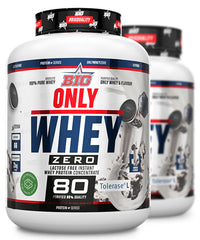
![CREABIG [Creapure®]](http://bigsupps.site/cdn/shop/products/producto_BIG_creabig_creapure_250g_0noflavour_500x600_8c48a126-a2a2-46a5-9bbd-8763ab82d768_200x.jpg?v=1757315967)
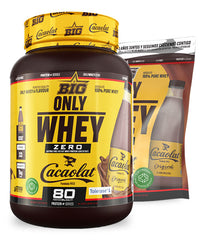
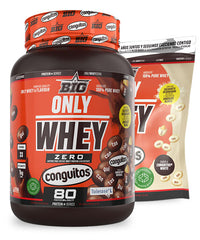
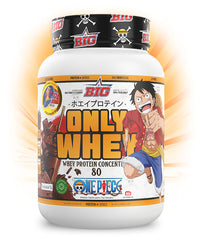
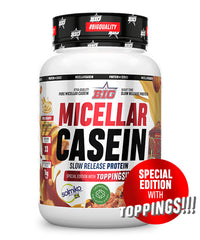
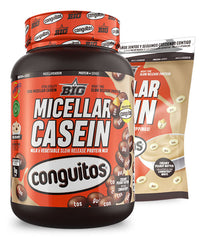
![CFM ISO ZERO [saco]](http://bigsupps.site/cdn/shop/files/producto_cfm_doypack_0noflavour_500x600a_200x.jpg?v=1750981452)
![CLEAR ISO ZERO [750g]](http://bigsupps.site/cdn/shop/files/producto_BIG_clearprotein_icepop_0noflavour_500x600a_200x.jpg?v=1757074297)
![CREABIG FIESTA® KOJAK® flavor - [250g]](http://bigsupps.site/cdn/shop/files/producto_BIG_creabig_kojak_0noflavour_500x600a_200x.jpg?v=1763548822)
